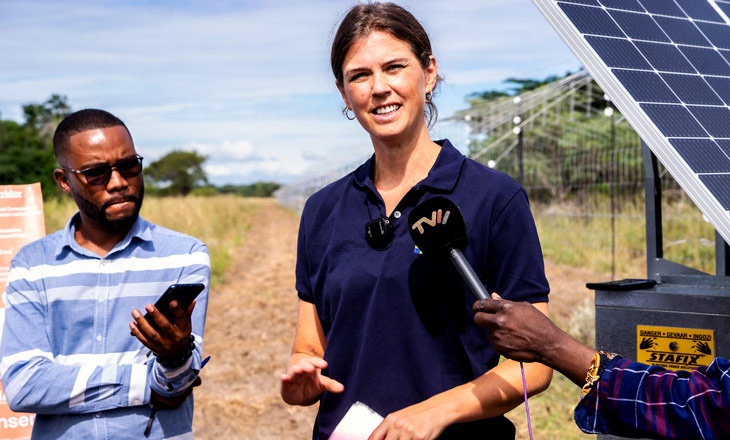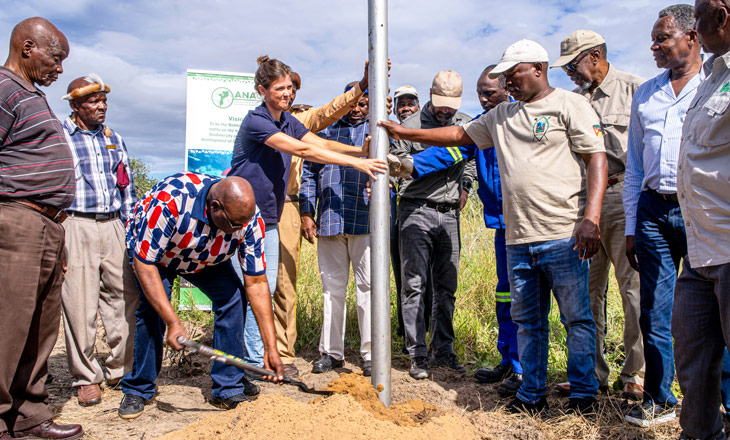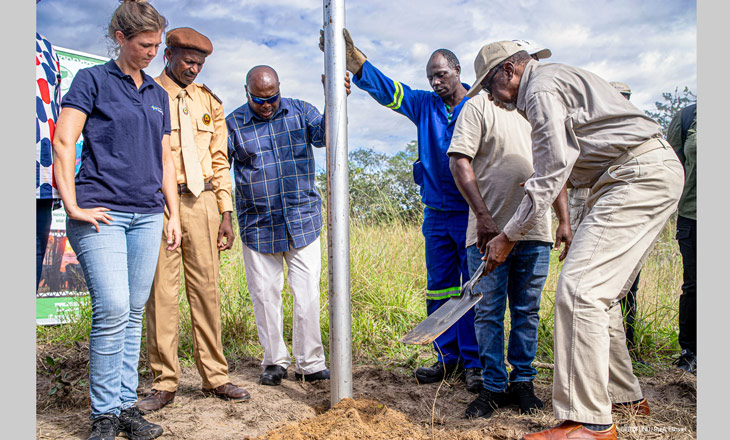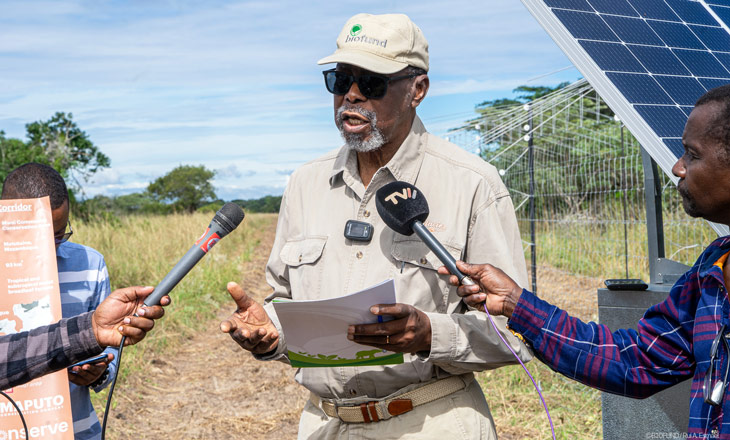The foundation stone for the fence of the Muwai community conservation area was officially laid, in a ceremony filled with symbolism and collective commitment to biodiversity protection and community well-being. The 43 km elephant-proof structure promises to reduce human-wildlife conflicts while strengthening locally led conservation practices.
Published at 08/05/2025
Muwai Fence Marks a New Stage in Community Conservation in Mozambique
This initiative represents an unprecedented milestone in Mozambique, as it is the first community fence of its kind financed by the Foundation for the Conservation of Biodiversity (BIOFUND), with support from Sweden through its Biodiversity Conservation Programme. The project is being implemented in coordination with the National Administration of Conservation Areas (ANAC) and other partners, including the Maputo Conservation Company, the Maputo Environmental Protection Area, and the Maputo National Park.
During the ceremony, institutional and community representatives highlighted the importance of the structure not only as a physical barrier but as a symbol of “trust, partnership, and hope.” The fence was designed with technology adapted to elephant behavior, including solar-powered electric wires and reinforced structures to prevent invasions, thereby protecting neighboring farming communities.
The ANAC representative stressed that this is “a concrete step in the protection and conservation of wildlife” and thanked the involvement of national and international partners, such as the Embassy of Sweden, FNDS, and the World Bank. “More than a physical structure, it symbolizes the recognition of traditional values that have flourished here for generations,” he said.
Frida Rodhe, representative of the Embassy of Sweden, emphasized the long journey leading to the implementation of the project: “It is not only a fence; it is a symbol of hope and development for the area.” She also stressed the expectation that the structure “will bring safety to the communities, while also enhancing their production opportunities.”
Luís Bernardo Honwana, Executive Director of BIOFUND, reinforced the strategic role of this initiative for community conservation in the country:
“BIOFUND reaffirms its commitment to continue supporting strong community initiatives that promote conservation and contribute to the well-being of local communities.” He also emphasized the importance of the “active involvement of all institutions present: ANAC, APA Maputo, Maputo National Park, Maputo Conservation Company, and local authorities, to ensure the success and sustainability of this initiative and to consolidate the Muwai area as a national reference.”
Honwana also called for the “responsible and transparent management of resources” and highlighted the role of communities as the “true guardians of this area.”
Armando Tembe, a community representative, recalled that at the beginning “they did not believe this process would achieve these results,” but today the feeling is one of collective pride: “The communities are ready to conserve biodiversity.” The leader praised the training efforts and exchange of experiences carried out, particularly the study visits to South Africa, as examples of mobilization and community ownership of the project.
Finally, Musa, from the Maputo Conservation Company, explained in detail the technical functioning of the fence and the measures taken to ensure the safety of both people and animals. “This is the first line of defense (…). Communities on the other side can continue to live and do what they have been doing for a long time,” he said, referring to the direct impact the structure will have on the daily lives of local populations.
The ceremony ended with a visit to the construction site, where participants observed the technical components and clarified questions about the project. The Muwai fence thus establishes itself as a pioneering example of community conservation in Mozambique, combining local knowledge, technological innovation, and international cooperation.






